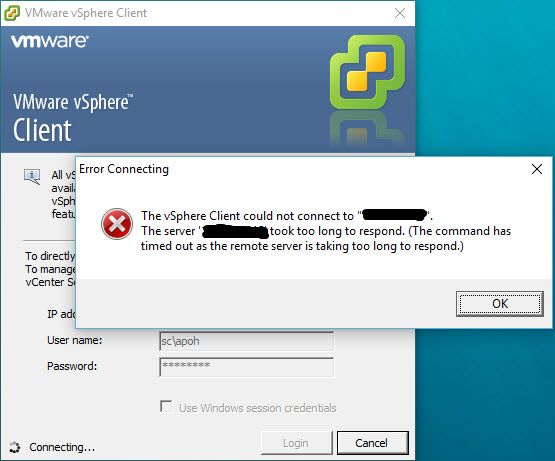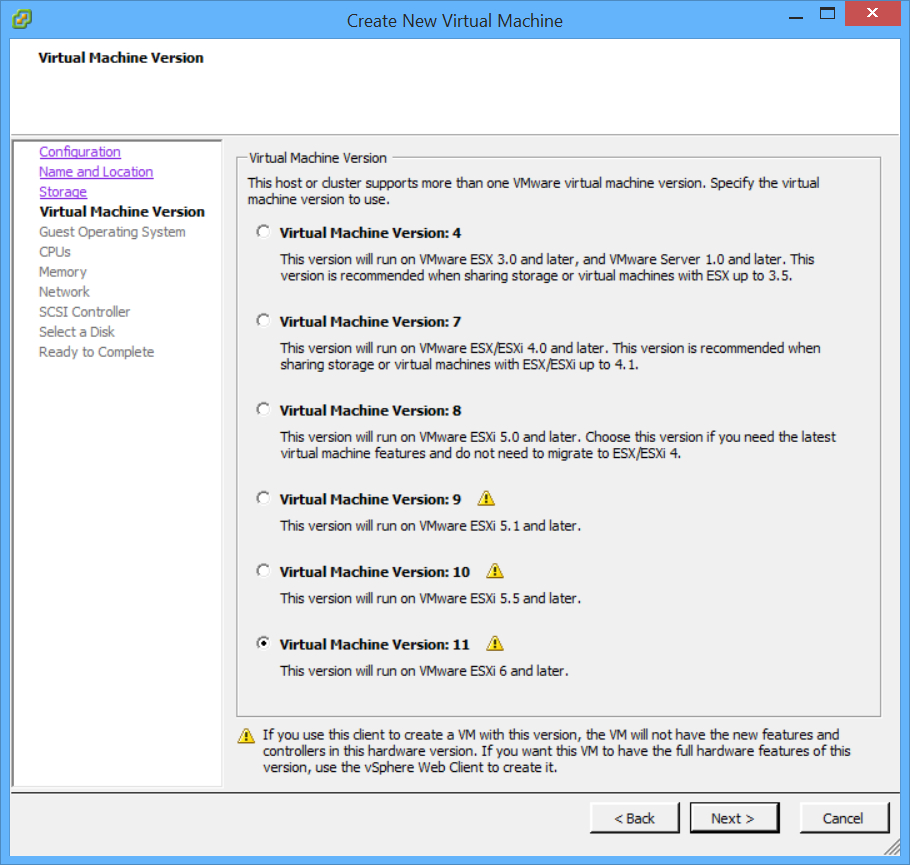- As of the vSphere 5 (ESXi 5) release, Macintosh is now supported as a VM guest, as long as you put it on Mac hardware. Lauren Malhoit puts an old Mac Pro 4 through the test.
- If you are using a Linux-based pc or Mac OS X and want to manage a vSphere-environment then you might ask yourself the question if there is a native OS-version of the vSphere Client available for your platform.
- Install Vsphere Client
- Vsphere Web Client Mac Os
- Vmware Vsphere Client For Mac
- Vsphere Client For Mac Os Catalina
- Vsphere Client For Mac Os 10.13
VSphere Client on Mac OS X Demo. Mike on June 6, 2009 at 9:55 pm Wow that is some super hackery! `ariel on June 6, 2009 at 11:14 pm Very nice!!! I just do all the step on my Debian box and now i dont have to RPD into the machine with the vpxClient!!! If you use VMware Fusion or ESXi on a computer with an Apple label, you can create Mac OS X Server (10.5 or later) virtual machines and install VMware Tools. Prerequisites Power on the virtual machine. Mac OS: Mozilla Firefox 34 and later. Google Chrome 39 and later. Later versions of these browsers are likely to work, but have not been tested. The vSphere Web Client stores user data including saved searches, Work In Progress items, and Getting Started Pages preferences. You can remove this stored data to reset these items to the initial.

In the VMWare vSphere Client interface you can search virtual machines by their names only. But in some cases it is necessary to find the specific VMWare virtual machine by its IP or MAC (NIC hardware) address.
It is easier to do it using the VMWare PowerCLI that allows youy to search by different virtual machine parameters.
Run the PowerCLI console and connect to your vCenter server or ESXi host using the following command:
Connect-VIServer vcenter-hq.woshub.com -User administrator

To find a virtual machine by its MAC address, use these commands:

$vmMAC='00:52:32:DD:12:91”
Get-VM | Get-NetworkAdapter | Where-Object {$_.MacAddress –eq $vmMAC } | Select-Object Parent,Name,MacAddress
Install Vsphere Client
As you can see, the command has returned the name of the virtual machine with its MAC address.
You can also search for a specific MAC address directly in the virtual machine configuration files (VMX) on the VMFS datastore. Connect to your ESXi host via SSH and run the command:
find /vmfs/volumes | grep .vmx$ | while read i; do grep -i '00:52:32:DD:12:91' '$i' && echo '$i'; done
If you have VMware Tools installed on your virtual machines, you can search by the IP address of the guest operating system. For example, you have to find a VM with the specific IP address. Use the following commands:
$vmIP='192.168.1.102”
Get-VM * |where-object{$_.Guest.IPAddress -eq $vmIP}|select Name, VMHost, PowerState,GuestId,@{N='IP Address';E={@($_.guest.IPAddress[0])}}|ft
If you know only a part of the IP address, use the following command:
$vmIP='192.168.”
Get-VM * |where-object{$_.Guest.IPAddress -match $vmIP}|select Name, VMHost, PowerState,@{N='IP Address';E={@($_.guest.IPAddress[0])}} ,@{N='OS';E={$_.Guest.OSFullName}},@{N='Hostname';E={$_.Guest.HostName}}|ft
The command will list the names and types of installed OSs of all virtual machines which IP addresses match this pattern.
VMWare Error: Unable to Access a File Since...
October 1, 2020How to Enable and Configure SNMP on VMWare...
September 7, 2020Selecting the Number of vCPUs and Cores for...
August 18, 2020Configuring USB Devices Passthrough from VMWare ESXi to...
August 12, 2020Match Windows Disks to VMWare VMDK Files
July 21, 2020Update 2
In early 2016, VMware began including the embedded HTML5 host client for managing ESXi in version 6.0 U2 from your web browser. Meant to connect to and manage single ESXi clients, it’s a great solution for users getting started with a dedicated Mac (like a quad-core mini or a Mac Pro) running VMware at MacStadium.
Update
The venerable William Lam of virtuallyGhetto noticed we were missing ESXi Embedded Host Client. He wrote a great article on this tool explaining its use that's worth checking out. We're ready to add any other suggestions that our readers may have.
Here’s the Situation
You’ve just had a Mac mini setup with ESXi to move all of your software onto one machine. VMware ESXi is a great option to get the most out of a single server at MacStadium as it’s the only enterprise option available for virtualizing OS X, Windows, and Linux on one machine.
You’re probably using MacStadium because you personally use a Mac (let’s call it a MacBook Pro) for day-to-day work and recognize the potential of a hosted Mac. Rather than continue paying more for shared hosting at another provider (without OS X of course) you’d like one place to manage all of your servers.
The next step is obviously connecting to and managing your VMware single-server ESXi environment. This is where the VMware vSphere software suite comes into play. But wait, you've only got the MacBook Pro! Unfortunately for developers working on Apple hardware locally, there is no native VMware vSphere client available for OS X. Don’t give up, though; there are alternatives.
Will There Ever be a Desktop App for OS X?

There was a glimmer of hope for Mac users in a preview of VMware vSphere 6.0. A thick (desktop) client was included that could be installed locally by Windows and Mac users (and presumably Linux in the future). Unfortunately, it disappeared in the next release candidate and has not been seen again.
Can I Use vSphere Web Client?
In older versions of VMware vSphere, a Windows desktop was the primary means of accessing vSphere environments. Now though, more and more users are taking advantage of the vSphere web client to access vSphere.
The catch with vSphere Web Client is that it’s only accessible if you have vCenter. On a single-server solution running ESXi, that means $99/month. Don’t give up hope just yet.
Vsphere Web Client Mac Os
What About VMware Fusion?
If you’re a recent convert to virtualization and tested the waters in VMware Fusion Pro on your local Mac machine, you’re in luck. VMware Fusion Pro for Mac includes the only truly native client for accessing your remote vSphere environment from OS X. If you’re not already using Fusion Pro is it worth it to purchase a license? At $200, it might be a hard sell for managing your single ESXi host.
Vmware Vsphere Client For Mac
Can I Use Windows on my Mac?
Vsphere Client For Mac Os Catalina
If you’ve got Boot Camp on your Mac, you could save all of your work to a remote or shared partition, log out, reboot into Windows, open up your shared partition or remote folder, open the vSphere client, and finally connect to vSphere and manage your virtual machines. That’s a lot of steps but it is a viable solution. You could also run a Windows VM in VMware Fusion or Workstation Player.
Is There Command Line Access?
Yes, you can partially manage your ESXi server using SSH. You’ll have to have access to a vSphere client temporarily to enable SSH access in ESXi. vCLI, the VMware vSphere Command-Line Interface, is also an alternative for management from a Linux or Windows system.

Vsphere Client For Mac Os 10.13
Does MacStadium Offer any Alternatives?
For single-server ESXi installations, we can make sure your server is always available whenever you need access from one of the above options. If you are in a testing phase and plan to move to a multi-host ESXi cluster, there is great news. We offer vCenter to all private cloud environments. A team of users on Mac’s can all manage vSphere using the included vSphere Web Client.
Don’t hesitate to reach us over live chat or by opening a support ticket if you have questions or need help with your Mac servers running ESXi.
References
